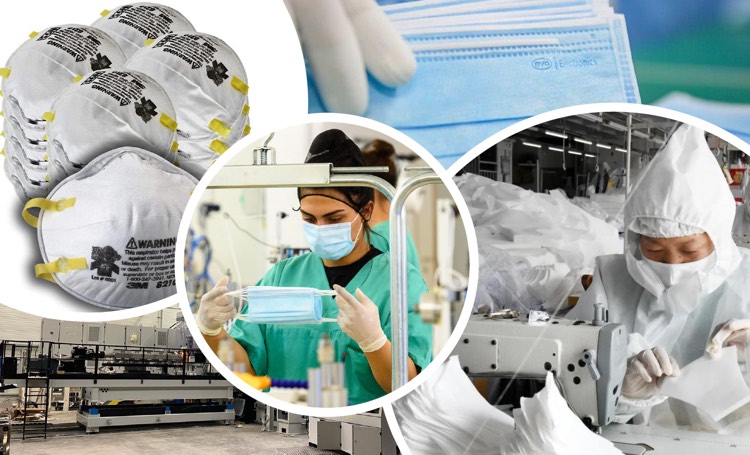LEATHERHEAD – The global market for meltblown nonwovens has been fundamentally reshaped by the experience of Covid-19 with demand for vital products like face masks and medical PPE prompting an increase in meltblown sales from US$809 million in 2019 to $1.68 billion in 2020.
As this process has become a primary concern for nonwovens producers and converters it is profiled in depth in a new dedicated Smithers study – The Future of Meltblown Nonwovens to 2026 – published today. It gives provides detailed market data for meltblowns (by tonnage, surface area, raw material cost, and sales value) charting the radical changes that have characterised the market since the beginning of 2020.
In the first days of the pandemic professional and medical-grade PPE – especially N95 medical face masks – became a vital commodity. Smithers’ data show how demand increased nearly 10-fold from 14,400 tonnes in 2019 to 121,800 tonnes in 2020, while other medical meltblown applications rose 5-fold. This led to meltblown production sites running at near or overcapacity; and other production facilities, like SMS, being switchover to meltblown manufacture. A host of new lines have been commissioned worldwide to raise capacity and ensure domestic availability.
The report also notes that the reduction of the Covid threat through H2 2021 is leading to a slight fall in the market for 2021 after this unprecedented peak. Residual fears over Covid and the need to establish strategic stockpiles against similar outbreaks in the future mean that demand will remain well above pre-pandemic levels through to 2026. A total of 302,700 tonnes, or 5.07 billion square metres, with a sales value of $1.17 billion will be sold in that year, Smithers says.
The experience has brought a major – if temporary – shift in the meltblown markets. The importance of face mask media has led to the fine fibre meltblowns (4 micron or less) overtaking coarser standard fibre meltblowns (4-15 microns). Simultaneously the rise in demand for disposable products have seen these overtake durable meltblown nonwovens as the main market application – disposables’ share rose from 40% in 2019, to 64.6% of total consumption in 2020. Though a return of the pre-Covid mix of durables and disposables is forecast by 2026.
For many durable meltblown the closure of end-use industries like construction and automotive production, impacted sales. While some lines were repurposed in the short term the market will benefit in the future from new infrastructure spending plans and the desire for improve fine mesh filtration media.
The report also highlights how new meltblown production lines have been built and entered operation in record time across the pandemic period. As demand for facemasks slackens in subsequent years the market will face an oversupply of fine fibre meltblown capacity – as much as 77% of this new is untenable in the longer term. This will lead to lower prices if polypropylene prices stabilise, and the closure of some older lines. Government support to protect local meltblown production and converting capacity for PPE as a strategic resource will not eliminate the imperative to develop new end-use applications for meltblown output.
One other factor that will emerge over the five-year Smithers forecast period is the need for greater sustainability in nonwovens. Performance requirements mean meltblowns will continue to rely almost exclusively on plastic feedstocks, especially polypropylene. It represents 91% of meltblown materials in 2021, with only minor shares for other polymer types.
Across 2021-2026 there is potential to integrate bio-based polymers, including some more biodegradable grades. Other advances in waste reduction, lower basis weight materials, and use of recycled polymers are also options. For meltblown nonwovens these are not anticipated to have a significant impact before 2026. These products may ultimately benefit from technologies developed for other nonwoven processes, but meltblown will continue to be a segment defined by performance.
